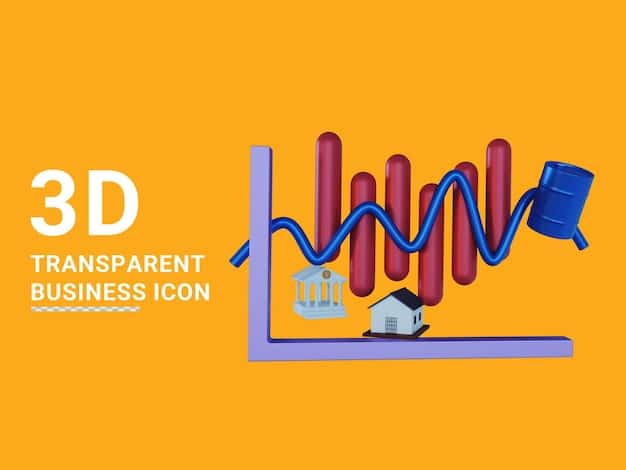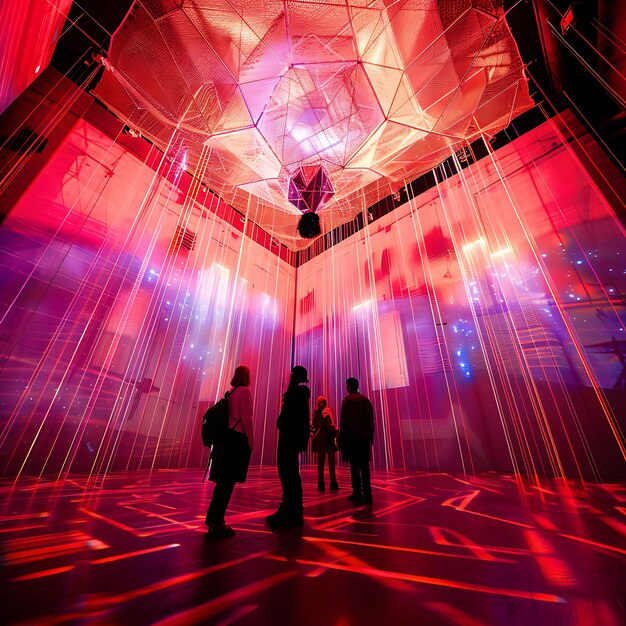SM Entertainment’s US Partnership: K-Pop Ticket Prices Up 15% by 2025

SM Entertainment’s recent strategic partnership with a major US entertainment conglomerate is projected to increase K-Pop concert ticketing prices by up to 15% in the US market by 2025, reflecting enhanced fan experiences and infrastructure investments.
The K-Pop phenomenon continues its global ascent, captivating millions and transforming the landscape of entertainment. Yet, as its popularity surges, so too do the complexities surrounding its operations, particularly concerning live events. A recent development poised to significantly impact American K-Pop enthusiasts is the strategic alliance formed by SM Entertainment, one of South Korea’s preeminent entertainment agencies, with a prominent US entertainment entity. This exclusive partnership has the potential to fundamentally alter the dynamics of ticket pricing for K-Pop concerts in the United States, with industry analysts projecting an increase of up to 15% by 2025. This isn’t merely about higher costs; it reflects a deeper shift in how K-Pop concerts are produced, distributed, and experienced stateside.
The Strategic Rationale Behind SM Entertainment’s US Partnership
SM Entertainment, a pioneering force in the K-Pop industry, has long been at the forefront of global expansion. Its recent partnership with a major US-based entertainment giant is not an isolated event but a calculated move designed to further solidify its presence and influence in one of the world’s largest entertainment markets. This collaboration extends beyond simple concert promotion; it encompasses a broader array of objectives aimed at streamlining operations, enhancing fan engagement, and ultimately, maximizing market share. Understanding the strategic underpinnings of this alliance is crucial to grasping its potential impact on ticket prices.
At its core, the partnership seeks to leverage the US partner’s extensive infrastructure and expertise. This includes access to a wider network of venues, enhanced logistical support, and a deeper understanding of the North American consumer market. For SM Entertainment, this means more efficient tour planning, reduced operational hurdles, and a greater capacity to deliver high-quality productions. For the US partner, it represents a significant opportunity to tap into the burgeoning K-Pop market and diversify its entertainment portfolio.
Driving Factors for Increased Investment
The decision to invest more heavily in the US market is multifaceted. It’s driven by the undeniable growth of K-Pop’s fan base in North America, which has consistently shown a willingness to spend on live experiences. This robust demand creates a fertile ground for expanded operations and premium offerings. Furthermore, the partnership aims to elevate the overall concert experience, bringing it closer to the standards seen in other global entertainment capitals.
- Enhanced Production Value: The partnership allows for greater investment in stage design, sound systems, lighting, and special effects, delivering a more immersive and memorable show.
- Expanded Venue Access: Leveraging the US partner’s venue network means more consistent access to larger, more suitable arenas and stadiums, reducing reliance on suboptimal spaces.
- Improved Merchandising and VIP Experiences: The collaboration facilitates better distribution channels for official merchandise and the development of exclusive VIP packages, adding value for fans.
These enhancements, while delivering a superior product, inevitably come with increased costs. The investment in larger venues, more elaborate productions, and enhanced fan experiences necessitates a recalibration of pricing strategies. This is a common practice in the entertainment industry, where superior offerings often command a higher price point.
The strategic synergy between SM Entertainment and its US counterpart is aimed at creating a more sustainable and profitable touring model. By consolidating resources and expertise, they can address some of the long-standing challenges associated with international K-Pop tours, such as logistical complexities and marketing reach. The ultimate goal is to create a more seamless and impactful experience for both the artists and their dedicated fan base.
Understanding the K-Pop Concert Ticketing Ecosystem
The K-Pop concert ticketing ecosystem in the United States is a complex web of agencies, promoters, ticketing platforms, and secondary markets. It’s an environment often characterized by high demand, limited supply, and passionate fan bases, leading to rapid sell-outs and significant price fluctuations. Understanding this underlying structure is essential to comprehending how a partnership of this magnitude could influence future pricing.
Historically, K-Pop concert tickets have been subject to various pressures. The sheer volume of demand from a highly engaged fandom means that general public sales often disappear within minutes, pushing many fans to the secondary market. This market, rife with scalpers and dynamic pricing, often sees ticket prices inflate to many times their face value. While this creates opportunities for some, it also leads to significant frustration and financial burden for many dedicated fans.
Current Market Dynamics and Challenges
Before this partnership, K-Pop concert organizers faced several challenges in the US. These included securing appropriate venues, navigating complex local regulations, managing international logistics for artists and production teams, and combating secondary market speculation. These factors collectively contributed to the current pricing model, which, while already considered high by some, did not always reflect the full production costs or the demand.
- High Operational Costs: Touring internationally with large K-Pop groups involves significant expenses, from artist travel and accommodation to equipment transport and venue rentals.
- Limited Supply vs. High Demand: The number of available tickets often pales in comparison to the immense fan demand, creating intense competition and driving prices up.
- Secondary Market Influence: Scalpers and resellers significantly impact the market, often acquiring tickets at face value and reselling them at exorbitant prices, making it difficult for average fans to attend.
- Ticketing Platform Fees: Service fees, processing fees, and other charges added by ticketing platforms can significantly increase the final ticket price for consumers.
The involvement of a major US partner, with its established relationships and infrastructure, could potentially mitigate some of these challenges. By consolidating certain aspects of the touring process, such as venue booking and logistical planning, efficiencies might be gained. However, these efficiencies are likely to be reinvested into enhancing the concert experience, rather than solely reducing ticket prices.
The ticketing ecosystem is also influenced by the sheer scale of K-Pop productions. These are not simple concerts; they are elaborate shows featuring intricate choreography, stunning visuals, and multiple costume changes. The resources required to bring such spectacles to life are substantial, and the ticket price is a reflection of this investment. The new partnership, by aiming for even higher production values, will naturally factor these elevated costs into the final ticket price.
Projected 15% Price Increase: Analysis and Justification
The projection of a 15% increase in K-Pop concert ticketing prices by 2025 is not an arbitrary figure but an informed estimation based on several economic and industry factors. This increase is anticipated to be a direct consequence of the strategic partnership, reflecting both enhanced value for the consumer and improved profitability for the organizers.
Firstly, the partnership aims to elevate the overall quality of the concert experience. This includes securing premium venues, investing in cutting-edge production technology, and potentially extending the length of shows or incorporating unique fan interactions. Such improvements, while highly desired by fans, invariably incur higher costs. These costs are then factored into the ticket price, reflecting the added value proposition.

Factors Contributing to the Price Hike
Several key elements are expected to contribute to the projected increase. These factors are intertwined and collectively point towards a higher average ticket price for K-Pop concerts in the US.
- Premium Venue Utilization: With access to a broader, more luxurious array of venues, the cost of renting these spaces, which often come with superior amenities and technology, will be higher.
- Technological Upgrades and Production Scale: Investment in state-of-the-art sound, lighting, LED screens, and special effects for more immersive performances will necessitate a premium.
- Enhanced Artist Logistics and Accommodations: Smoother, more comfortable logistics for artists and their extensive teams during US tours can add to operational costs.
- Increased Marketing and Promotion: A more aggressive and sophisticated marketing strategy to reach a wider audience will also be a factor in the overall cost structure.
- Inflation and General Market Trends: Beyond the partnership, general economic inflation and the rising cost of live entertainment across the board will naturally contribute to price increases.
It is important to note that this 15% increase is an average projection. Individual concert prices could vary depending on the artist, the specific venue, the city, and the package type (e.g., general admission vs. VIP). However, the general trend indicates a systematic upward adjustment across the board.
This price adjustment is also a strategic move to capture more of the value currently siphoned off by the secondary market. By setting face values closer to the true market demand and the enhanced production value, organizers aim to reduce the incentive for scalping and ensure that a larger portion of the revenue directly benefits the artists and the production. While this may mean higher initial costs for fans, it could also lead to a fairer distribution of tickets in the primary market in the long run.
Potential Benefits for Fans and the K-Pop Industry
While the prospect of increased ticket prices might initially cause concern among fans, the strategic partnership between SM Entertainment and its US counterpart is expected to yield substantial long-term benefits for both the K-Pop fandom and the industry as a whole. These benefits extend beyond simple financial transactions, encompassing enhanced experiences, improved accessibility, and a more robust market for K-Pop.
One of the most significant advantages for fans will be a noticeable upgrade in the quality of the concert experience. This translates into more spectacular stages, clearer sound, and potentially longer or more interactive shows. The US partner’s expertise in large-scale event production means that K-Pop concerts are likely to become even more polished and professionally executed, rivaling the biggest acts in Western music.
Advantages and Improved Fan Experience
The anticipated improvements are not just about aesthetics; they are about creating a more satisfying and memorable experience for everyone attending. These enhancements address common pain points and opportunities for growth within the K-Pop live event circuit.
- Superior Production Quality: Fans can anticipate advanced visuals, sound engineering, and stage designs, elevating the immersive nature of the performances.
- Access to Better Venues: The partnership may lead to more K-Pop concerts being held in larger, more comfortable arenas with better amenities, improving fan comfort and capacity.
- Reduced Secondary Market Speculation: By setting primary ticket prices closer to market value, the incentive for scalpers might decrease, potentially making it easier for genuine fans to purchase tickets at face value.
- More Frequent Tours and Wider Reach: A more efficient and profitable touring model could mean more frequent visits from artists and tours reaching a wider range of US cities.
- Enhanced Merchandising and Fan Engagement Opportunities: Opportunities for exclusive merchandise, fan meet-and-greets, and other interactive experiences could become more prevalent and accessible.
For the K-Pop industry, this partnership signifies a deeper integration into the global entertainment market. It provides a more stable and strategic platform for artists to reach their international fan base, fostering growth and sustained popularity. The successful execution of more elaborate and profitable tours in the US will serve as a blueprint for expanding into other global markets, further solidifying K-Pop’s position as a dominant musical genre.
Ultimately, while the initial price hike may be a point of discussion, the long-term vision is to create a premium, sustainable, and highly rewarding live experience for K-Pop fans. The investments made through this partnership are geared towards building a more robust infrastructure that can support the ever-growing demand for K-Pop in the United States, cementing its presence for years to come.
Mitigating the Impact of Price Increases on Fans
While the projected 15% increase in K-Pop concert ticketing prices by 2025 is a strong possibility, it doesn’t mean fans are entirely powerless. Both fans and industry stakeholders can adopt strategies to mitigate the financial impact and ensure that these highly anticipated events remain accessible to a wide audience. Open communication and innovative approaches will be key to navigating this new landscape.
One primary concern for fans is affordability. Even with enhanced experiences, a significant price jump can deter some from attending. Therefore, it becomes crucial for organizers to consider various ticketing tiers and options, ensuring that a range of price points are available to accommodate different fan budgets. This approach can help maintain inclusivity while still achieving the desired revenue targets.
Strategies for Affordability and Accessibility
A multi-pronged approach will be necessary to ensure that K-Pop concert-going remains a viable option for as many fans as possible. This involves both industry initiatives and proactive fan behaviors.
- Tiered Ticketing Systems: Offering a wide range of ticket prices, from lower-cost general admission seats to premium VIP packages, allows fans to choose according to their budget.
- Fan Club Pre-sales and Loyalty Programs: Rewarding loyal fan club members with early access and potentially discounted tickets can ensure dedicated fans get first opportunities.
- Payment Plans and Installment Options: Providing the option to pay for more expensive tickets or packages in installments can make them more manageable for fans.
- Strategic Venue Selection: While seeking premium venues, also considering a mix of larger, high-capacity arenas that can offer more seats at a lower average price.
- Official Resale Platforms: Implementing secure, official resale platforms can help deter scalpers and ensure that tickets are resold at or near face value, benefiting other fans.
Fans, too, can play a role by staying informed about official sales channels, avoiding unofficial secondary markets, and participating in fan communities that share legitimate ticketing information. Collective fan action, such as advocating for fair pricing and transparent practices, can also exert positive pressure on the industry.
Event organizers could also explore alternative revenue streams, such as enhanced merchandise sales or digital content, to offset some of the increased production costs without solely relying on ticket price hikes. Finding a balance between profitability and fan accessibility will be critical for the long-term health of the K-Pop concert market in the US. The partnership’s success will ultimately be measured not just by financial gains, but by its ability to foster a vibrant and accessible fan culture.
Beyond Ticketing: Broader Implications for K-Pop in the US
The strategic partnership between SM Entertainment and its US counterpart extends far beyond the immediate impact on concert ticket prices. It signals a fundamental shift in how K-Pop operates and expands within the lucrative North American market. This alliance has the potential to reshape artist development, content distribution, marketing strategies, and fan engagement, creating a more integrated and powerful presence for K-Pop in the US.
The increased investment and collaborative efforts mean that K-Pop acts under the SM Entertainment umbrella are likely to receive more robust and consistent support for their US activities. This could translate into more frequent tour stops, longer promotional periods, and potentially even localized content production. Such a dedicated approach can only deepen K-Pop’s roots in American popular culture.
Transformative Effects on Industry and Culture
The implications of this partnership are widespread, touching various facets of the entertainment industry and cultural exchange. Its ripple effect could be felt across artist management, media, and fan communities.
- Enhanced Artist Promotion and Media Exposure: Leveraging the US partner’s media connections can lead to more mainstream media appearances, interviews, and features for K-Pop artists, increasing their visibility beyond dedicated fan circles.
- Development of Localized Content: The partnership might pave the way for US-specific K-Pop content, potentially including collaborations with Western artists, reality shows, or documentaries tailored for the American audience.
- Improved Distribution Channels: Broader and more efficient distribution of K-Pop music, merchandise, and other products across the US, making it easier for fans to access official items.
- Talent Scout and Artist Development Synergies: Potential collaboration on scouting new talent in the US, or even joint artist development programs, blending K-Pop training methodologies with Western industry practices.
- Stronger Brand Presence for SM Entertainment: The partnership will significantly bolster SM Entertainment’s brand recognition and influence as a global entertainment powerhouse.
Furthermore, this collaboration could set a precedent for other major K-Pop agencies looking to deepen their footprint in the US. It could inspire similar partnerships, leading to a more formalized and structured approach to K-Pop’s global expansion. This formalization, while potentially leading to higher costs, also promises greater stability and sustainability for the genre’s growth.
Ultimately, the partnership represents a coming of age for K-Pop in the US. It’s a recognition of its established popularity and a strategic move to capitalize on its continued growth. While ticket prices are a tangible outcome, the broader narrative is one of K-Pop cementing its position as a mainstream cultural force, capable of commanding significant investment and delivering world-class entertainment experiences.
The Future Landscape of K-Pop Concerts in the US
Looking ahead to 2025 and beyond, the K-Pop concert landscape in the United States is poised for significant transformation, heavily influenced by strategic partnerships like the one forged by SM Entertainment. This evolution will likely bring about a balance between enhanced fan experiences and revised economic models, shaping how future generations of K-Pop enthusiasts engage with their favorite artists.
The most immediate and discernible change will be the overall quality of live performances. With increased investment and operational efficiencies, fans can expect consistently higher production values, better venue accessibility, and potentially longer, more elaborate tours. The days of K-Pop acts playing smaller, less equipped venues may become a rarity as the industry matures its US operations.

Anticipated Trends and Fan Adaptations
Several trends are expected to emerge as a result of these strategic shifts. Both the industry and the fan base will adapt to these new realities, refining their approaches to K-Pop consumption and participation.
A key trend will be the formalization of fan engagement. While grassroots fan efforts will always be a cornerstone of K-Pop, the industry will likely offer more official, curated fan experiences, from exclusive merchandise drops at concert venues to personalized VIP packages. These will be designed to deepen fan loyalty while also providing additional revenue streams.
Another anticipated trend is the increased prominence of diversified revenue models. Beyond ticket sales, concert organizers will likely explore more avenues, such as premium merchandise bundles, interactive digital content tied to the live experience, and perhaps even exclusive fan-artist engagement events that occur outside the main concert, offering various price points and experiences for fans. This holistic approach can help to distribute the financial burden and offer options across different budget levels.
Fans, in turn, will likely become more discerning consumers. As ticket prices potentially rise, fans will expect a commensurate increase in value and experience. They will also adapt their purchasing strategies, potentially focusing on fewer but higher-quality concert experiences, or pooling resources with friends to secure better seats or VIP packages. The secondary market will continue to exist, but efforts to combat scalping through enhanced, secure resale platforms will hopefully gain traction, making the market fairer.
The future also holds the promise of more collaborative ventures between K-Pop agencies and Western entertainment entities, leading to more joint tours, music releases, and media projects. This will further blur the lines between K-Pop and Western pop culture, creating a truly globalized music industry where boundaries are increasingly irrelevant. The projected 15% increase in ticket prices is but one facet of this broader, exciting evolution.
| Key Point | Brief Description |
|---|---|
| 📈 Price Increase | K-Pop concert ticket prices in the US are projected to increase by up to 15% by 2025. |
| 🤝 SM/US Partnership | Strategic alliance by SM Entertainment with a major US entertainment entity drives this change. |
| ✨ Enhanced Experience | Investment in superior production value, better venues, and improved fan engagement. |
| 🌐 Broader Implications | Reshapes artist promotion, content distribution, and K-Pop’s mainstream presence in the US. |
Frequently Asked Questions
Ticket prices are anticipated to increase due to SM Entertainment’s new US partnership, which aims to significantly enhance concert production quality, secure premium venues, and improve overall fan experiences. These upgrades come with higher operational costs that will be reflected in ticket pricing to sustain the elevated standards.
Fans can look forward to superior production value, including advanced sound and lighting systems, more elaborate stage designs, and potentially longer, more immersive shows. The partnership also promises access to more prestigious venues, improved merchandise distribution, and exclusive VIP experience opportunities.
A 15% increase presents a challenge for fan accessibility, especially for those on tighter budgets. Organizers are expected to mitigate this through tiered ticketing, fan club pre-sales, and potentially payment plans, aiming to provide various price points to accommodate a broader spectrum of fans and maintain inclusivity.
By setting initial ticket prices closer to market value and the enhanced production cost, the partnership aims to reduce the profit margins for scalpers. Implementing official and secure resale platforms is also a strategy to ensure tickets are resold fairly, benefiting fans rather than speculators.
Beyond ticketing, this partnership signifies a deeper integration of K-Pop into the US entertainment industry. It is expected to lead to more frequent tours, enhanced artist promotion, potential localized content creation, and strengthened brand presence, solidifying K-Pop’s mainstream cultural status in North America.
Conclusion
The strategic partnership between SM Entertainment and its prominent US entertainment counterpart marks a pivotal moment for K-Pop in the United States. While the projected 15% increase in concert ticketing prices by 2025 is a notable outcome, it represents a calculated investment in elevating the live K-Pop experience to unprecedented levels. This evolution promises fans superior production quality and venue experiences, while formalizing K-Pop’s robust presence in the mainstream American entertainment landscape. As the industry adapts to these changes, the focus will remain on balancing economic imperatives with fan accessibility, ensuring K-Pop’s vibrant future in the US.





